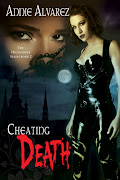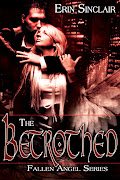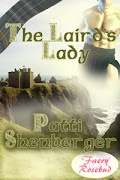As a writer it is my duty to weave fantastical tales a reader can get lost in, but it is also necessary to incorporate enough realism to suspend one’s disbelief. A fellow writer, Tami Cowden, author of Cruising for Love, recently said in an interview for a local paper, “You also have to understand human emotions. Romance writers not only write a story, but we also bring personalities into it. Characters play a huge role.” I concur. Yes, physical descriptions and names are important but, to use an old adage, it’s what’s inside that counts. By knowing what a character is made of, good and bad, a writer can then weave subtle details into the story to show the reader through mannerisms, dialogue, thoughts, etc., who the person is. This person becomes someone who the reader can identify with and come to care for. In the reviews I have received remarks have been made about how realistic my characters are and how characters’ and readers’ emotions were brought to the fore. Now you may be asking, “How is this done?” In the series of articles, Making Characters Human, tips for creating multi-dimensional characters, the kind readers can be sympathetic toward, will be discussed.
Part 1: The Basics
Congratulations, you’re about to give birth to a character! Get out your notebook and pen or open a new document and start keeping track of your new baby. Or, feel free to use the worksheet found at the bottom of this article.
“Hi! My name is ___.” When a new child is coming into the world, what’s the first thing parents normally do? They pick out a name. This should be the same for the creation of your new character. Some authors, myself included, are lucky in that their characters introduce themselves immediately. If the character doesn’t say ‘hi, my name is’ what then? Assess them and try to give him or her a name that will give the reader an idea of his or her identity. Make sure to think about the name. Does it convey stereotyped looks or mannerisms? In terms of the hero is it a strong sounding name? In terms of the heroine is it a soft name for a demure woman or a powerful name for a fiery female? Does your character have a middle name? Perhaps he or she goes by the second name because they hate the first one or maybe they’re undercover or maybe a parent had the same name. The possibilities of how a character uses a name are endless. Also consider the meaning behind a person’s name. If your character calls for an unusual name, have it refer to a quality of the character’s personality, background or occupation. For this, you’ll need to get a book of baby names or find a good resource on-line. For example, in my Si’Ludo Sisters trilogy the sisters’ names reference being born into a religious family. The men’s names in each of the stories have meaning: Mochrie – my beloved; Corbet – black haired; Rand’s otherworld name is Dolon – spy; Gaven – white hawk. In my upcoming Si’Ludo Prophesy series the heroine’s name is Calissa and the origin and meaning of her name is Greek, most beautiful, diminutive of Calista, mythological Arcadian who transformed into a she-bear, then into the Great Bear constellation. The Great Bear constellation figures prominently in the Si’Ludo world. Additionally, when you are naming other characters in your story, make sure to vary the names so they don’t all begin with the same letter or sound alike. Oh, and don’t forget to give your character a last name.
“Happy Birthday to…” When and where was your character born? The information should include City, State, Country, Date and Time and these details will come in handy for the rest of the Making Characters Human series.
“Just the facts…” What’s the physical description of your character? Pretend like you’re describing this person to a friend or family member. You won’t use all the details in your story but it’s good to have a complete picture of who you’re working with. Start at the top and work your way down when you take note of your character’s attributes. Hair: long, short, curly, wavy, straight, thick, thin, greasy, dry, etc. What’s the color? Forehead: shape and size. Eyes: color, shape, size, placement on the face. Nose, ears, face: shape and size. Lips and teeth: shape, size, color etc. Are the teeth straight, crooked? How’d they get that way and why? The neck, is it long and thin or short and thick? What’s the overall shape and height of the body and are there any identifying scars or birthmarks? What’s the skin like, pale and ghostly or thick and rich like fine chocolate? Don’t overlook the feet and hands of your character nor the types of nails they may have. Does your character stem from a certain religious or ethnic background? Who are the members of the character’s family? You don’t have to go into details here, just point out their names and rolls, i.e.: Character Faith has Dad – James; Mom – Grace; Sister – Hope and Sister – Joy. Does the character work or go to school and what are they doing there? Again, just the facts ie: Faith is a student studying to get a Philosophy degree. Where does he or she live? There’s no need to describe the setting since this is a character sketch. The name of the city and state will do fine here. In addition, does the character have certain mannerisms/non-verbal cues? Do they bite their lower lip a lot, crack their knuckles, blink constantly, fidget with jewelry, hair, clothing, tap their foot in all states of emotion? Remember, no one is perfect so give your characters imperfections too.
“They brought their bags with them…” Everyone has a complex background, emotional baggage they carry around, and your characters should too. Were they teased or praised as a child? Have they been jilted once, twice, too many times to count? In school were they in the geek, jock or loner group? These are only a few ideas of past events that can shape and influence a life and lend a hand in how one person will react differently to a situation than another. But what really makes a character tick and brings emotion to the story? What makes one person patient as a saint and another like a thoroughbred chomping at the bit at the gate? How do we pack the character’s bags? Join me next time when the Making Characters Human series goes deeper into the character’s psyche and bathes him or her in the sun.
Oh, and don’t forget to bring your character’s birth certificate with you.
You can visit C.R. Moss at http://home.earthlink.net/~cr_moss
If you’re interested in utilizing the worksheet, please visit http://www.associatedcontent.com/user/310364/cr_moss.html where the article has been published with the worksheet. When you're on the site you'll have to scroll down to the published content section. (If the article isn't there then the system hasn't posted it yet and you can check back in a couple of days for it.) Thanks!
Monday, October 27, 2008
Subscribe to:
Post Comments (Atom)












4 comments:
This is very interesting CR and will be a fascinating series to follow. Thanks for sharing the tips! :)
I just love this!
As you know, I do total character charts on people and some of them are quite extensive. BUT you are absolutely right, it's the whole package that makes the character, not just what's on the outside.
Lynn
I enjoyed this CR keep on going with it!
Erin
This was so informative. I think every writer should read it. Great job!
Post a Comment